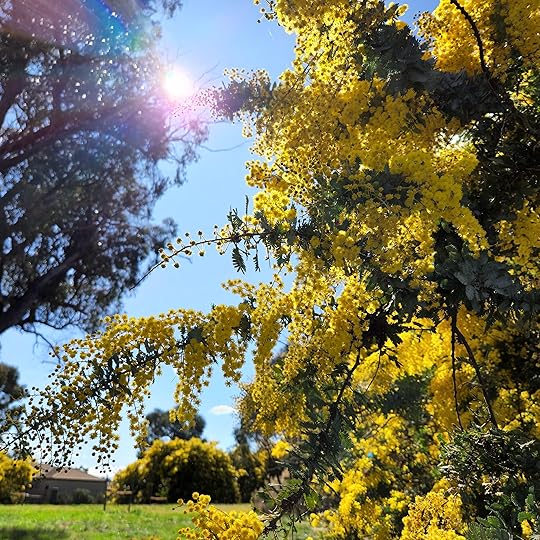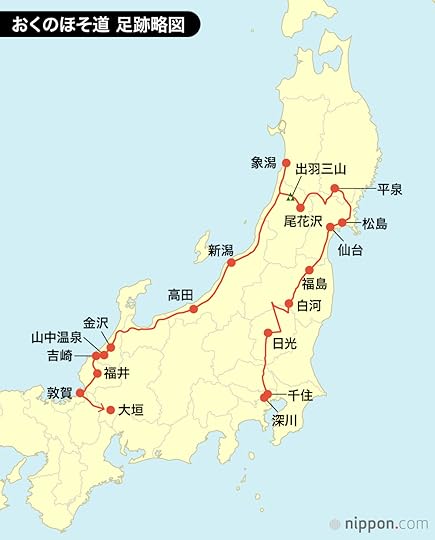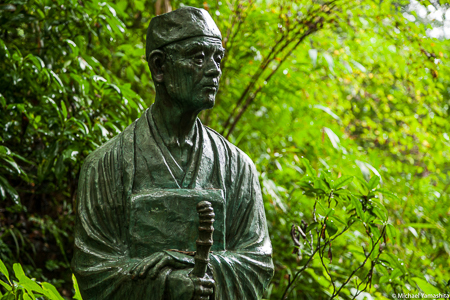What do you think?
Rate this book


167 pages, Paperback
First published January 1, 1694
no sooner had the spring mist begun to rise over the field than I wanted to be on the road again to cross the barrier-gate of Shirakawa in due time. The gods seemed to have possessed my soul and turned it inside out, and roadside images seemed to invite me from every corner, so that it was impossible for me to stay idle at home. Even while I was getting ready...I was already dreaming of the full moon rising over the islands of Matsushima.
It was by a singular stroke of genius that an ancient writer pointed out that the autumn was the best season to visit this beach, for it seemed to me that the scene excelled in loneliness and isolation at that season. It was, on the other hand, an incurable folly of mine to think that, had I come here in autumn, I would have had a greater poetic success, for that only proved the poverty of my mind.There are famous views, historical places, mountains, bays, flowers, trees about which poems have been written. Basho accompanied by apprentices stops at these places, met up with others and they aim to write poems by the moonlight. The group of poets waiting in a spinney on a cloudy night watching for the moon to rise over the trees in order to compose verse amuses me still.
My guide congratulated me by saying that I was indeed fortunate to have crossed the mountains in safety, for accidents of some sort had always happened to him on past trips.
According to the child who acted as a self-appointed, this stone was once on the top of a mountain, but the travellers who came to see it did so much harm to the crops that the farmers thought it a nuisance and thrust it down into the valley.
It was early in October when the sky was terribly uncertain that I decided to set out on a journey. I could not help feeling vague misgivings about the future of my journey, as I watched the fallen leaves of autumn being carried away by the wind.

Still alive I am
At the end of a long dream
On my journey,
Fall of an autumn day.
— Bashō

1 Nozarashi kiko, 1685
2 Kashima kiko, 1687
3 Oi no kobumi, 1690-91
4 Sarashina kiko, 1688
5 Oku no hosomichi, 1694
Furuike ya, kawazu tobikomu, mizu no oto.
Breaking the silence
Of an ancient pond,
A frog jumped into water -
A deep resonance. (p. 9)
The old pond:
A frog jumps in-
The sound of the water.
(illustration facing p. 262)
The chestnut is a holy tree, for the Chinese ideograph for chestnut is Tree placed directly below West, the direction of the holy land. The Priest Gyoki is said to have used it for his walking stick and the chief support of his house. (p. 107)
. . . The pines are of the freshest green, and their branches are curved in exquisite lines, bent by the wind constantly blowing through them. Indeed, the beauty of the entire scene can only be compared to the most divinely endowed of feminine countenances, for who else could have created such beauty but the great god of nature himself? My pen strove in vain to equal this superb creation of divine artifice. (p. 116)
. . . What a travel it is indeed that is recorded in this book, and what a man he is who experienced it. The only thing to be regretted is that the author of this book, great man as he is, has in recent years grown old and infirm with hoary frost upon his eye-brows. (p. 143)

